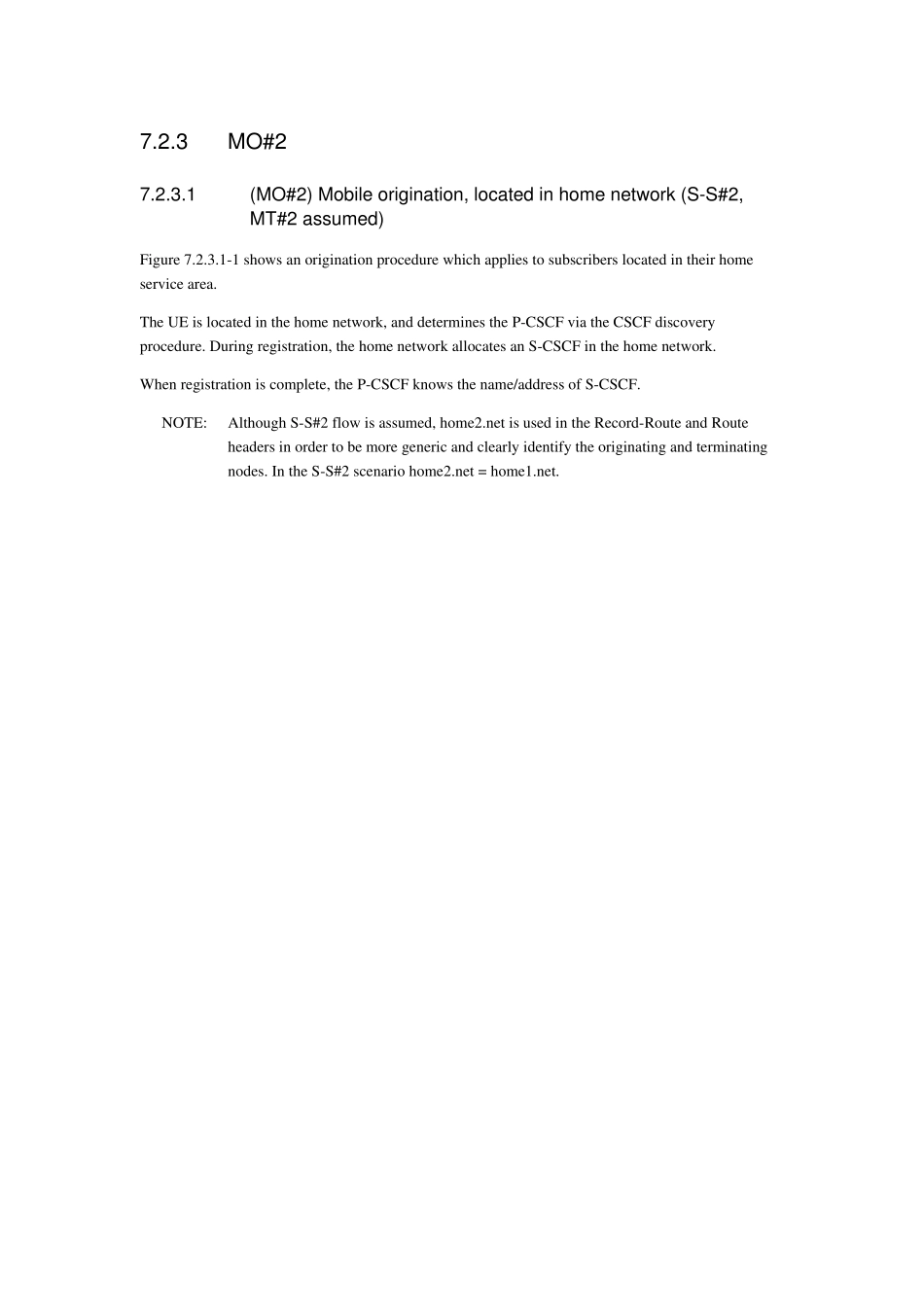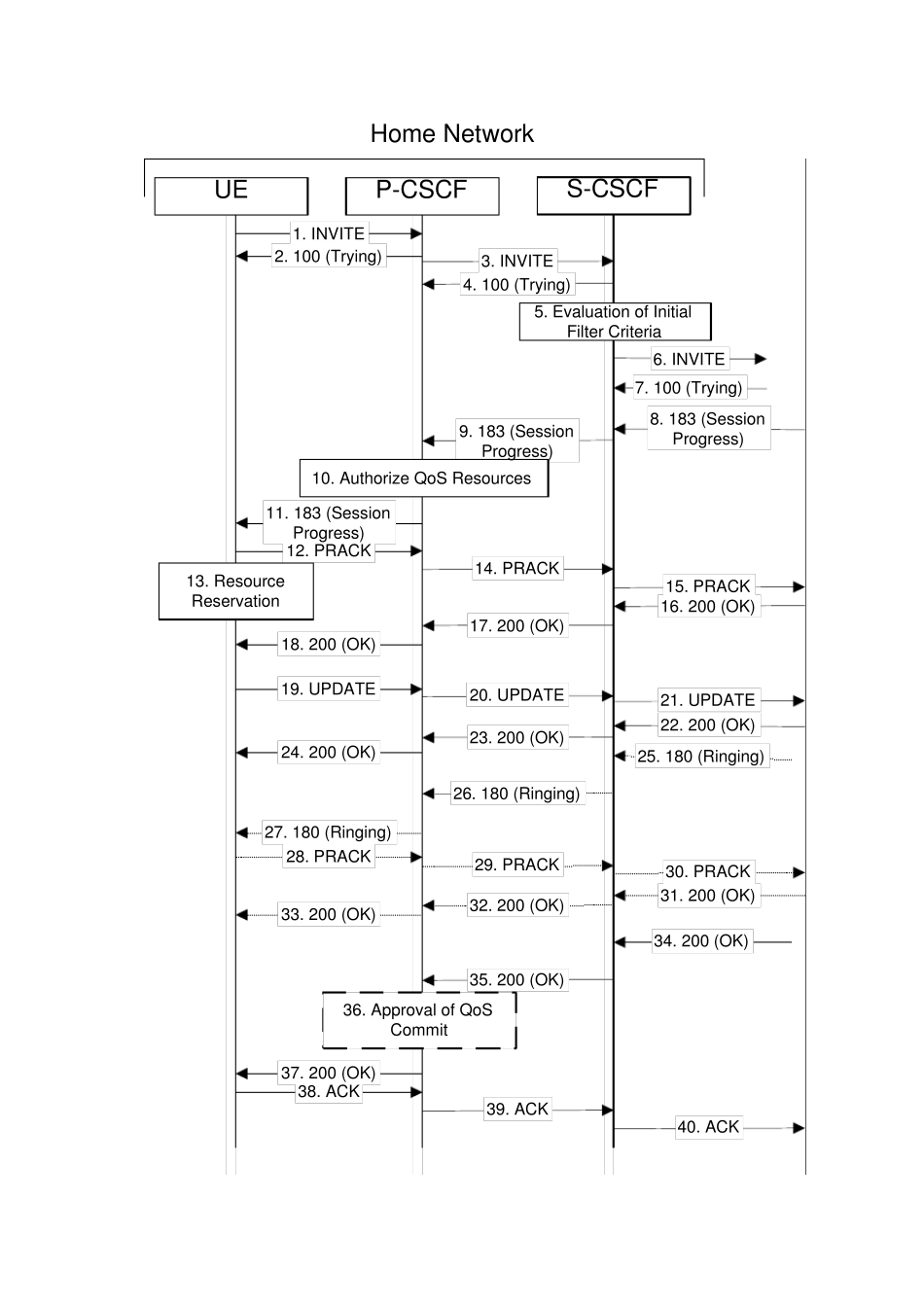7.2.3 MO#2 7.2.3.1 (MO#2) Mobile origination, located in home netw ork (S-S#2, MT#2 assumed) Figure 7.2.3.1-1 shows an origination procedure which applies to subscribers located in their home service area. The UE is located in the home network, and determines the P-CSCF via the CSCF discovery procedure. During registration, the home network allocates an S-CSCF in the home network. When registration is complete, the P-CSCF knows the name/address of S-CSCF. NOTE: Although S-S#2 flow is assumed, home2.net is used in the Record-Route and Route headers in order to be more generic and clearly identify the originating and terminating nodes. In the S-S#2 scenario home2.net = home1.net. 1. INVITE27. 180 (Ringing)3. INVITEUEP-CSCFS-CSCF9. 183 (SessionProgress)11. 183 (SessionProgress)12. PRACK18. 200 (OK)26. 180 (Ringing)28. PRACK33. 200 (OK)35. 200 (OK)37. 200 (OK)19. UPDATE22. 200 (OK)38. ACK5. Evaluation of InitialFilter Criteria6. INVITE34. 200 (OK)Home Network25. 180 (Ringing)13. ResourceReservation10. Authorize QoS Resources2. 100 (Trying)4. 100 (Trying)7. 100 (Trying)14. PRACK15. PRACK20. UPDATE21. UPDATE24. 200 (OK)23. 200 (OK)17. 200 (OK)16. 200 (OK)29. PRACK30. PRACK32. 200 (OK)31. 200 (OK)39. ACK40. ACK8. 183 (SessionProgress)36. Approval of QoSCommit Figu re 7.2.3.1-1: MO#2 Procedure MO#2 is as follows: 1. INVITE (UE to P-CSCF) - see ex ample in table 7.2.3.1-1 UE#1 determines the complete set of codecs that it is capable of supporting for this session. It builds a SDP containing bandwidth requirements and characteristics of each, and assigns local port numbers for each possible media flow. Multiple media flows may be offered, and for each media flow (m= line in SDP), there may be multiple codec choices offered...


